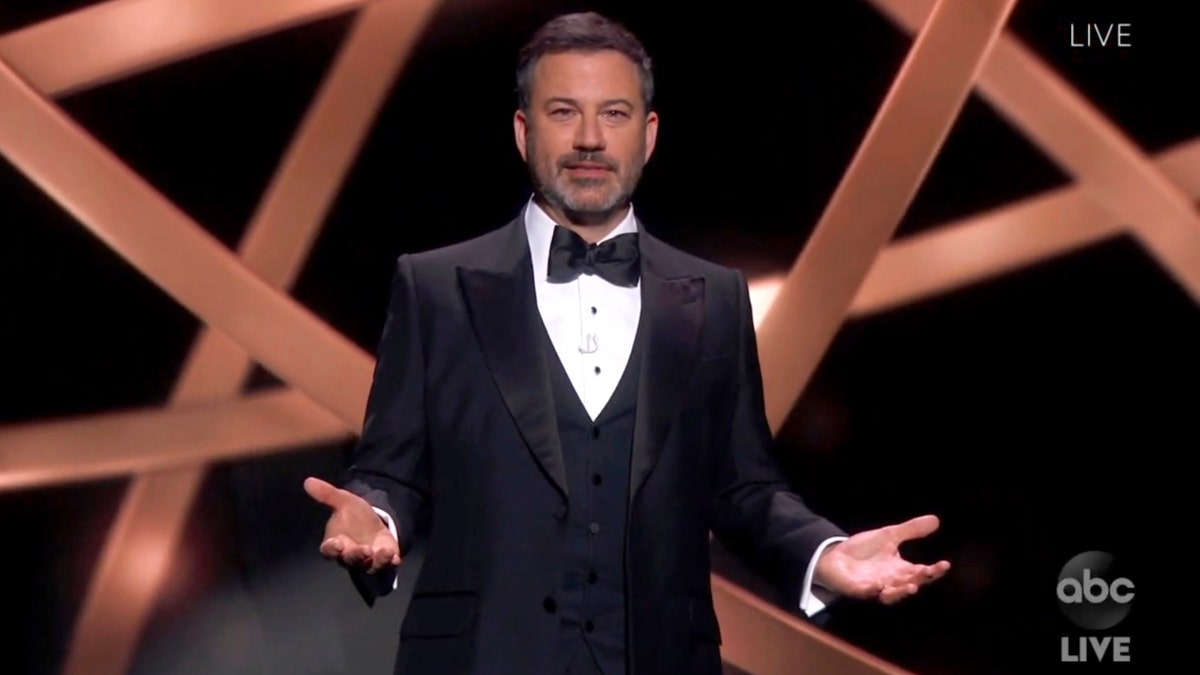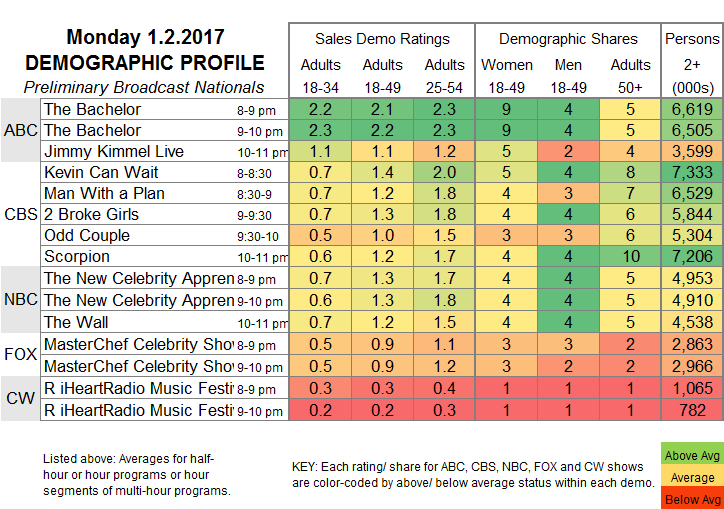Jimmy Kimmel's ratings have seen a notable decline in recent years, sparking discussions about the changing landscape of late-night television. As one of the most prominent late-night talk show hosts, Kimmel has always been a household name. However, the drop in ratings raises questions about the factors influencing this trend and the future of his show. In this article, we delve into the reasons behind Jimmy Kimmel's ratings decline and explore potential strategies to address it.
Jimmy Kimmel, known for his sharp wit and engaging interviews, has been a staple in the late-night television scene for over a decade. Yet, recent trends indicate a significant dip in viewership, which has caught the attention of media analysts and fans alike. This decline is not just about numbers but also reflects broader changes in audience preferences and media consumption habits.
As we explore the reasons behind Jimmy Kimmel's ratings drop, we will also examine the impact of social media, streaming services, and the evolving entertainment industry. Understanding these dynamics is crucial for comprehending the challenges faced by traditional late-night television shows in today's digital age.
Read also:Katelyn Katsaros Rising Star In The Entertainment Industry
Table of Contents
- Biography of Jimmy Kimmel
- Jimmy Kimmel Ratings History
- Recent Trends in Ratings Decline
- Audience Shift and Media Consumption
- Competition in Late-Night Television
- The Impact of Social Media
- Rise of Streaming Services
- Challenges in Content Creation
- Strategies to Revive Ratings
- Conclusion
Biography of Jimmy Kimmel
Early Life and Career
Jimmy Kimmel, born on November 13, 1967, in Brooklyn, New York, is an American comedian, television host, and producer. He grew up in a family that valued humor and storytelling, which laid the foundation for his future career in entertainment. Kimmel began his career in radio and later transitioned to television, hosting shows like "The Man Show" and "Jimmy Kimmel Live!"
| Full Name | James Meyer Kimmel |
|---|---|
| Date of Birth | November 13, 1967 |
| Place of Birth | Brooklyn, New York |
| Profession | Comedian, Television Host, Producer |
| Spouse | Molly McNearney |
Career Milestones
Kimmel's career took off when he became the host of "Jimmy Kimmel Live!" in 2003. The show quickly gained popularity for its humorous segments, celebrity interviews, and political satire. Over the years, Kimmel has interviewed numerous A-list celebrities and addressed pressing social issues, cementing his status as a prominent figure in the entertainment industry.
Jimmy Kimmel Ratings History
Jimmy Kimmel's ratings have experienced fluctuations throughout his career. Initially, the show saw a steady rise in viewership, peaking during the early 2010s. However, recent years have witnessed a decline in ratings, prompting concerns about the show's future. This section explores the historical context of Kimmel's ratings and the factors contributing to their decline.
- 2003-2010: Steady growth in viewership
- 2010-2015: Peak ratings during the Obama era
- 2016-present: Gradual decline in ratings
Recent Trends in Ratings Decline
The decline in Jimmy Kimmel's ratings can be attributed to several factors, including changing audience demographics and shifting media consumption habits. According to Nielsen ratings, the show has experienced a notable drop in viewership over the past few years, particularly among younger audiences. This trend highlights the challenges faced by traditional late-night television shows in retaining viewership in a rapidly evolving media landscape.
Factors Contributing to the Decline
- Changing audience preferences
- Increased competition from streaming platforms
- Shift in political climate
Audience Shift and Media Consumption
One of the primary reasons behind Jimmy Kimmel's ratings decline is the shift in audience preferences and media consumption habits. With the rise of streaming services and on-demand content, viewers are increasingly moving away from traditional television. This trend has impacted late-night television shows, including "Jimmy Kimmel Live!", as younger audiences prefer consuming content on platforms like Netflix, Hulu, and YouTube.
Impact of Streaming Platforms
Streaming platforms have revolutionized the way people consume entertainment. Shows like "The Daily Show" and "Last Week Tonight" have successfully adapted to this shift by releasing episodes on digital platforms, attracting a broader audience. Jimmy Kimmel's show, however, has been slower to adapt, resulting in a loss of viewership to competitors who have embraced digital distribution.
Read also:Had Hub 4u Your Ultimate Guide To Understanding And Maximizing Its Potential
Competition in Late-Night Television
The late-night television landscape is highly competitive, with numerous hosts vying for viewers' attention. Shows like "The Tonight Show Starring Jimmy Fallon," "Late Night with Seth Meyers," and "The Late Show with Stephen Colbert" have consistently challenged Jimmy Kimmel's dominance. This section examines the competition Jimmy Kimmel faces and the strategies employed by his rivals to attract audiences.
Key Competitors
- Jimmy Fallon
- Seth Meyers
- Stephen Colbert
The Impact of Social Media
Social media has become a crucial tool for late-night television hosts to engage with their audiences. Jimmy Kimmel has utilized platforms like Twitter and Instagram to promote his show and share clips with fans. However, the effectiveness of these efforts has been limited, as younger audiences prefer consuming content directly on social media rather than tuning in to traditional television.
Strategies for Social Media Engagement
- Posting engaging content regularly
- Collaborating with influencers
- Encouraging audience interaction
Rise of Streaming Services
The rise of streaming services has transformed the entertainment industry, offering viewers unprecedented access to content. Platforms like Netflix, Hulu, and Amazon Prime have disrupted traditional television, attracting audiences with original programming and on-demand access. This section explores the impact of streaming services on Jimmy Kimmel's ratings and the broader late-night television industry.
Challenges Posed by Streaming
- Competition for viewers' time
- Shift in content distribution models
- Changing viewer expectations
Challenges in Content Creation
Creating engaging and relevant content in today's fast-paced media environment is a significant challenge for late-night television hosts. Jimmy Kimmel must navigate the delicate balance between humor, politics, and entertainment to maintain viewer interest. This section examines the challenges faced by Kimmel in content creation and potential solutions to address them.
Potential Solutions
- Incorporating more diverse voices
- Addressing timely social issues
- Experimenting with new formats
Strategies to Revive Ratings
To revive his ratings, Jimmy Kimmel must adopt innovative strategies that resonate with modern audiences. This includes embracing digital platforms, enhancing social media engagement, and diversifying content offerings. By leveraging the strengths of streaming services and social media, Kimmel can reconnect with viewers and regain his position in the late-night television landscape.
Recommended Actions
- Partner with streaming platforms for exclusive content
- Expand social media presence through influencer collaborations
- Introduce interactive elements to engage audiences
Conclusion
Jimmy Kimmel's ratings decline reflects broader changes in the media landscape and audience preferences. While the challenges faced by late-night television shows are significant, they also present opportunities for innovation and growth. By adapting to the evolving media environment and embracing new strategies, Jimmy Kimmel can revive his ratings and continue to entertain audiences for years to come.
We encourage readers to share their thoughts on Jimmy Kimmel's ratings decline in the comments section below. Additionally, feel free to explore other articles on our website for more insights into the entertainment industry. Together, let's keep the conversation going and support the future of late-night television.

